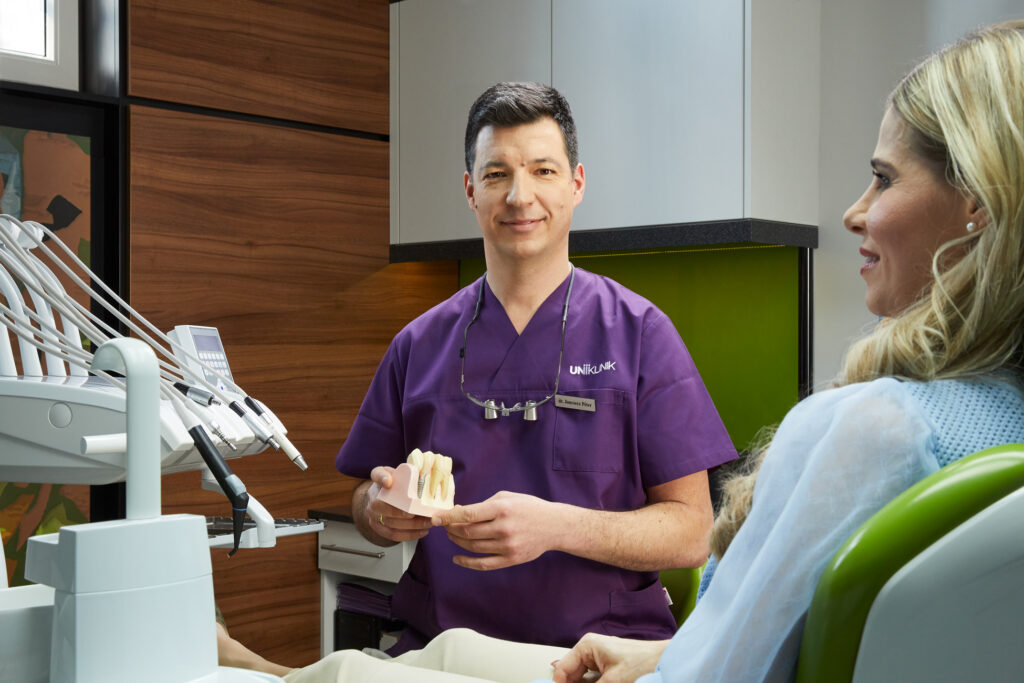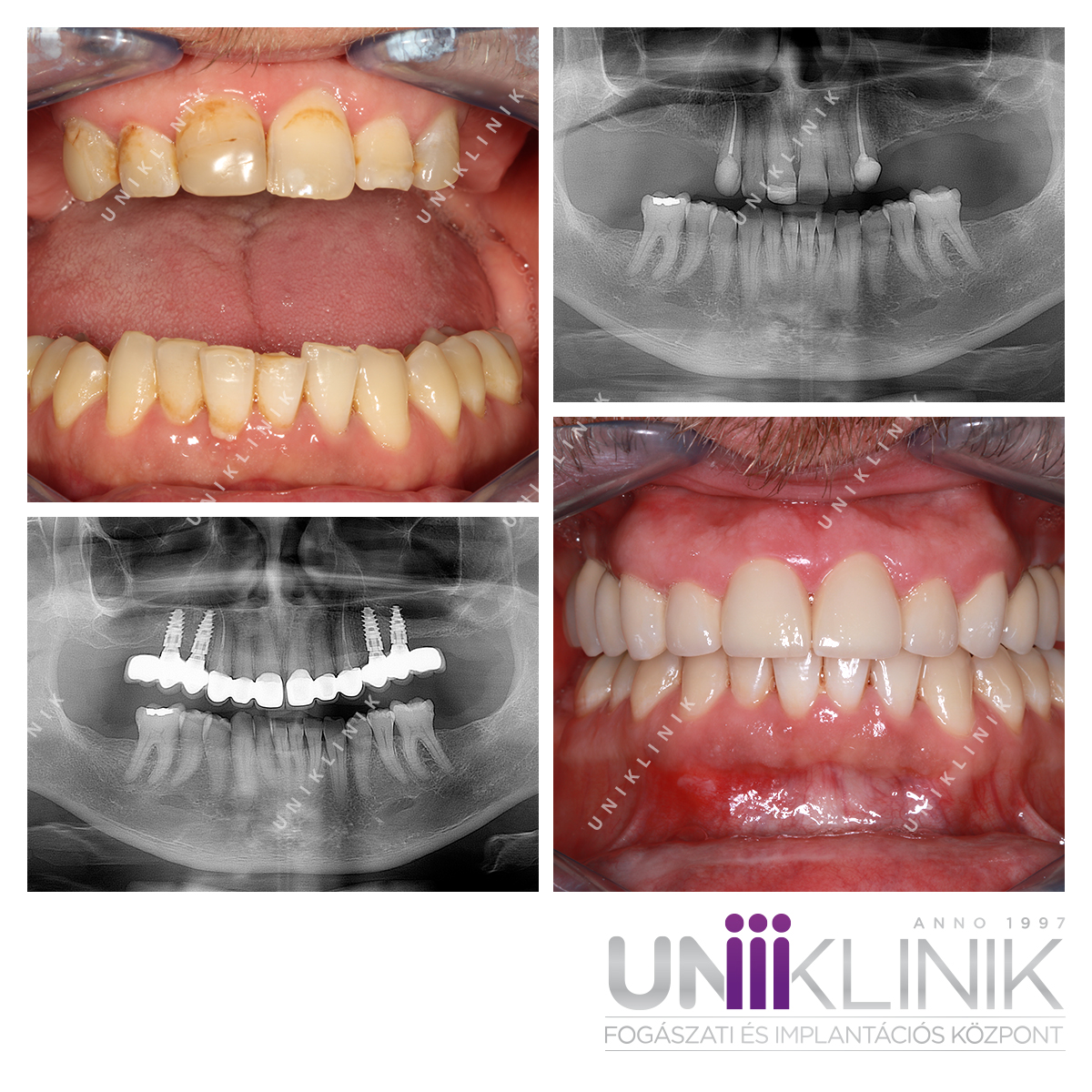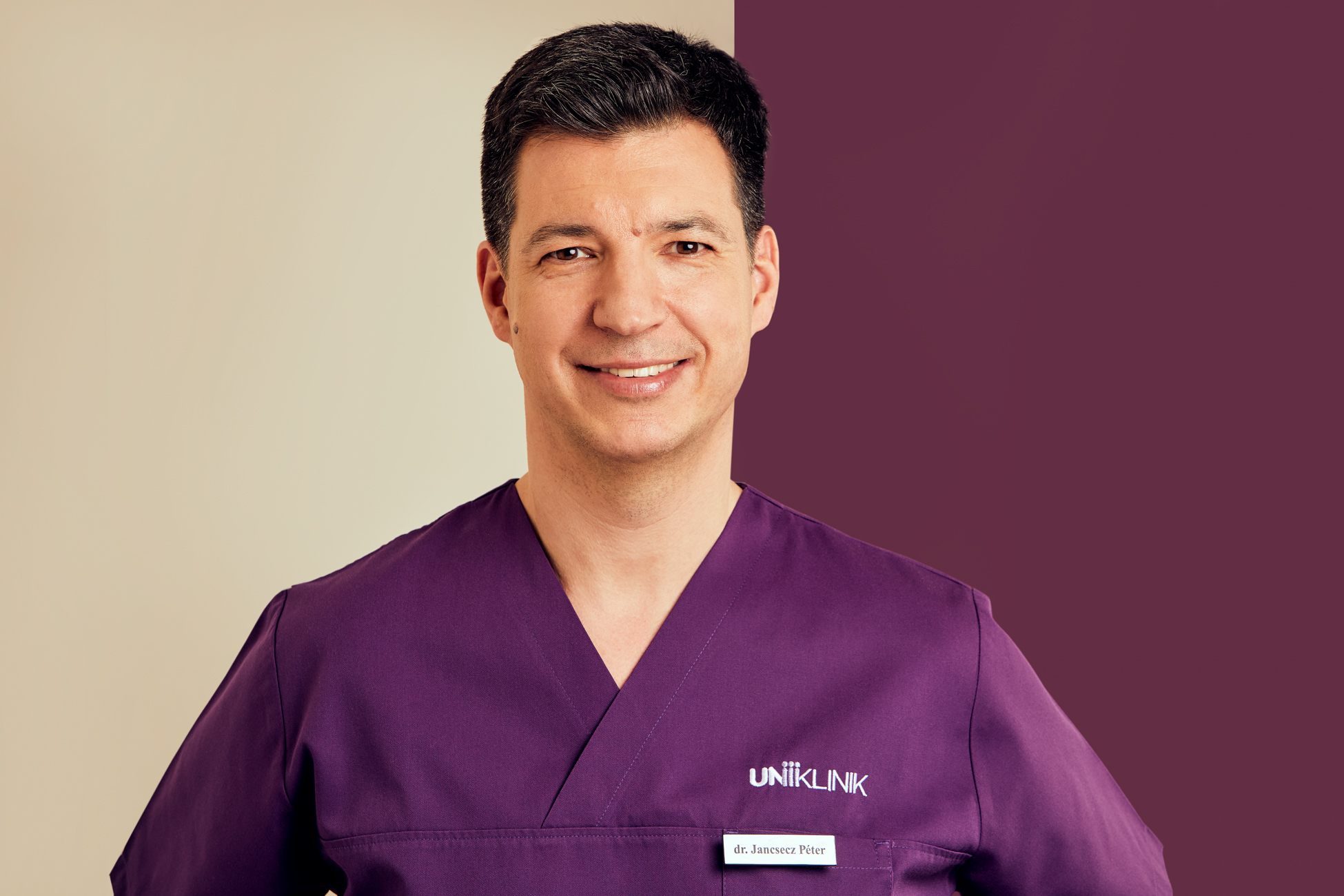
Dental Implants: What You Should Know
Dental implants can offer an excellent long-term solution for missing teeth, both in terms of aesthetics and functionality. Our guide answers common patient questions about the procedure.
When should I get dental implants?
During dental implantation, one or more artificial roots are placed into the jawbone, allowing us to replace one or even all missing teeth. Implants are generally the best solution when natural teeth cannot be restored therefore the patient needs an artificial tooth.
When is it necessary to consider dental implantation?
Poor oral hygiene, certain diseases, or accidents can lead to tooth loss. Missing teeth can cause chewing difficulties, while the absence of incisors significantly impacts the aesthetics of the smile. Replacing missing teeth should begin promptly because, over time:
- The dental arch can become asymmetrical as adjacent teeth shift into the gap, and opposing teeth may over-erupt.
- Bone loss occurs at the site of the missing tooth, which can complicate the implantation process.
Dental implants do not require the grinding down of potentially healthy teeth and provide an additional anchor tooth. Unlike bridges, implants do not place additional stress on adjacent teeth.

What happens if there isn’t enough bone for implantation?
Bone grafting
In some cases, the planned implant site may lack sufficient bone density. According to international studies, approximately 40% of dental implant procedures require some degree of bone grafting. The implant, essentially a titanium screw, can only integrate effectively into the jawbone and function long-term if surrounded by an adequate amount of bone tissue.
What causes bone loss?
- Traumatic tooth extractions: When tooth removal involves the loss of significant bone tissue, the body may struggle to regenerate the original width and/or height of the jawbone.
- Long-standing tooth loss: Without a tooth to stimulate it, the bone in the area of the extracted tooth gradually deteriorates. The alveolar ridge, the part of the jawbone that supports the tooth roots, depends on functional load to maintain its structure. In the absence of this load, the dynamic balance of bone regeneration and resorption tips toward bone loss.
- Anatomical factors: Bone height in the area of the upper premolars and molars is often insufficient for implantation, even if the bone width is adequate. In such cases, a sinus lift procedure may be performed.
- Thin bone: When the bone is too thin to accommodate a titanium implant, it must be augmented. This can be achieved through techniques like splitting (bone expansion) or by grafting a bone block harvested from a donor site.

Bone block grafting surgery prior to dental implantation
The following collage shows images of a bone block surgery performed in a case of significant bone loss. During the bone grafting procedure, Dr. Balázs Záhonyi, a dentoalveolar oral surgeon, transplanted a bone block from the posterior jaw area to the site where the implant was to be placed. The bone block was secured with titanium screws.
After the bone block surgery, a healing period of 3-6 months is required for the bone to integrate. Following this, the dental implant can be placed in the augmented area, and after an additional 4-6 months of healing, the final restoration can be made. In this case, the final restoration was a three-unit dental bridge supported by two implants.
Dental implant types: which dental implant type is the best?
The top-quality dental implants used at Uniklinik Dental and Implantation Centre are made exclusively from titanium alloys, as these offer minimal risk of rejection.
Nobel Biocare, a leading implant manufacturer, provides excellent quality and biocompatible implants:
- Alpha Bio dental implants are affordably priced, yet do not compromise on the risk of rejection.
- Nobel Replace CC implants significantly reduce the possibility of bacterial infection.
- Nobel Biocare Active implants offer high stability even in cases of poor-quality bone tissue.
Dental implants procedure
- Initial assessment
The implant procedure begins with a comprehensive evaluation, including an oral examination and a 3D CT scan. If necessary, a dental hygiene treatment or tartar removal will follow. - Dental implant placement
The next step is placing the implant into the bone, which is completely painless due to local anesthesia. During the surgical procedure (the length and diameter of the implant are determined based on the CBCT scan), the jawbone is prepared using a series of drills. A titanium root is then placed with the appropriate torque. Finally, the wound is closed with stitches. - Check-up and suture removal
A follow-up appointment is scheduled 7-10 days after the surgery for a check-up and suture removal. During the 3-6 month bone healing period, the implant integrates with the natural bone tissue. This is called osseointegration. - Implant exposure
After healing, the dentist reopens the gum above the implant to insert the healing screw. Following a 1-2 week recovery period, an impression is taken from the gum for the preparation of the dental restoration.

Dental implants FAQ
What are the risks of dental implants?
The risks of the procedure include inaccurately planned implant placement and improperly executed implantation. A superficial initial assessment increases the likelihood of failure and the risk of complications. In such cases, issues can arise that may lead to implant rejection.
Symptoms and causes of dental implant rejection
While some pain and swelling may occur after the surgery, certain more severe symptoms may indicate that the implantation was unsuccessful:
- Inflammation may develop after the procedure. Risk factors for infection include autoimmune diseases, smoking, and poor oral hygiene.
- Implant displacement can occur if the dental implant is not sufficiently stable.
- Failure may also happen if there is not enough bone to support the dental implant, as it won’t be able to integrate with the surrounding bone.
If pain persists for days or swelling does not subside, or if the gum bleeds or discharges, be sure to consult your dentist immediately!
Dental implant inflammation
A well-placed implant is usually pain-free and without complications, but if issues arise, they typically present as pain and inflammation. The area around the implant becomes red, swollen, and sensitive, and may discharge pus in some cases. The inflammation can damage the bone surrounding the infected dental implant, potentially leading to the loosening or loss of the implant.
Treatment for dental implant inflammation depends on the extent of bone loss: the sooner the infection is treated, the better the chances of recovery. Therefore, it is essential to seek professional care if any symptoms arise and not to delay regular check-ups.
What can you eat after a dental implant?
After a dental implant procedure, it is recommended to wait until the numbness has worn off before eating. Start with light, soft foods, but avoid chewing on the implant area. For a while, hard, chewy foods should be avoided. Dairy products are also not recommended immediately after the implantation.
Are dental implants cheap?
Most dental implants, and the implantation process itself, can be rather expensive compared to other dental procedures. However, they offer a solution that is unparalleled both in terms of aesthetics and functionality. Also, they can last a long time if you take care of them properly.
Ct navigált implantációs rendszerek
-
Implantáció
Az implantáció akár életre szóló megoldást jelenthet Önnek, ezért mi nem kötünk kompromisszumot. Klinikánkon az implantáció sikerességét CT-felvétel-alapú diagnózissal, a csúcstechnológiát alkalmazó svéd partnercéggel való együttműködéssel, valamint azzal biztosítjuk, hogy a műgyökér-beültetést kizárólag kitűnő szájsebész kollégák végzik.
Gyakori kérdések
A kezelésről részletesen is olvashat. Az alábbi oldalon összeszedtük a legfontosabb tudnivalókat kérdés - válasz formátumban.
ElolvasomImplantációs kezelések
A fogászati implantáció kecsegtet a legjobb eredményekkel a fogpótló kezelések közül, hiszen akár egy életen át tarthat egy megfelelően elvégzett beültetés. Az Uniklinik Fogászat és Implantációs Központ a következő implantációs kezeléseket kínálja páciensei számára:
-
Nobel Replace CC
250 000 Ft
Alpha Bio
150 000 Ft
Nobel Active
315 000 Ft
Felépítmény
97 500 - 147 500 Ft
Sinus-lift csontpótló anyaggal (Bio Oss)
240 000 Ft
Sinus-lift csontpotló anyaggal (Bio Oss) + saját csont
275 000 Ft
Smart Guide sebészeti sablon
130 000 Ft-tól
Implantátum felszabadítás gyógycsavarral
32 500 Ft
Dental implantation treatments in Budapest
Looking for high-quality dental implants? Contact us by phone or book an appointment online so we can provide you with the best possible treatment!
Dr. Alexandra Gilicze, dentoalveolar oral surgeon, Dr. Péter Jancsecz, specialist in oral and maxillofacial diseases, dentoalveolar oral surgeon, Dr. Balázs Záhonyi, dentoalveolar oral surgeon, and Dr. Tamás Sass, dentoalveolar and maxillofacial oral surgeon, specialist in oral and maxillofacial diseases, are ready to welcome their patients with the latest treatments and procedures.
Our dental clinic has its own X-ray and CT lab, so we can perform all necessary imaging, from simple X-rays to panoramic radiographs and 3D CT scans, for an accurate diagnosis.






